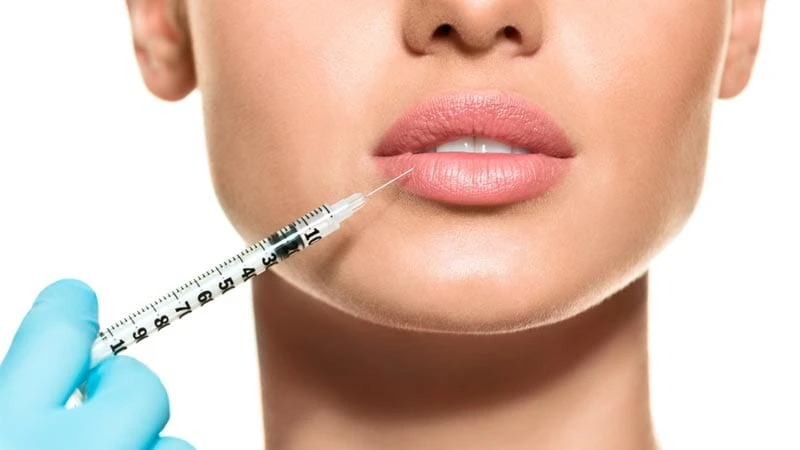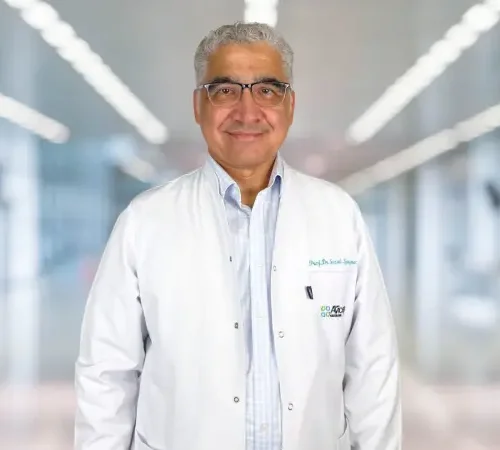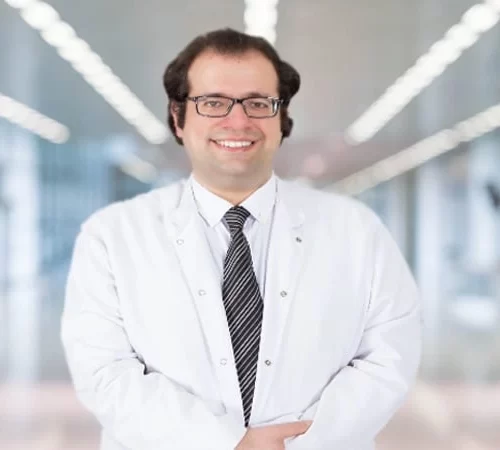Dermatology
The skin is an open organ and is in constant contact with the external environment, which leads to the appearance of diseases. Due to frequent exposure to environmental factors such as chemicals, allergens, and similar stimulants, the onset of dermatological problems may become easier. Diseases that could appear on the skin, in some cases can cause aesthetic and cosmetic problems, and in some cases – difficulties in performing daily functions. Therefore, dermatological diseases should be treated immediately as soon as they are noticed. Dermatology department, also known as Dermatology or Dermatovenerologica Diseases, deals with the diagnosis and treatment of skin diseases by doctors who have received 4 years of specialized training after 6 years of medical education.
What is dermatology?
Dermatology is a department of medicine that deals with the diagnosis and treatment of skin diseases. Here are studied and treated all kinds of diseases of the skin, which is an extremely vital organ for the human body.
Dermatology plays an effective role in the diagnosis and treatment of skin appendages (hair, nails, sweat glands), oral mucosa, and sexually transmitted diseases. Doctors in this department, called dermatologists, specializing in the general structure of the skin, its functions, protection of the integrity and health of the skin, allergic skin diseases, sexually transmitted diseases, infectious diseases, diseases of the hair and nails, neoplastic diseases, skin findings of some metabolic-systemic diseases. Dermatologists are fully trained in every area, from the most common skin diseases to rare species. They aim to restore patients’ health by working in collaboration with specialists from other departments when necessary. Dermatologists choose personalized treatment methods that play an effective role in the diagnosis and treatment of skin diseases. Skin diseases can occur at any age from infancy to adulthood.
Which diseases are treated in dermatology clinics?
The Department of Dermatology provides services for the diagnosis and treatment of all skin diseases. Fungal diseases, psoriasis, acne, pubertal acne, eczema, syphilis, sexually transmitted diseases such as gonorrhea, treatment of all sexually transmitted skin diseases, skin cancer (diagnosis and treatment of melanoma), birthmarks, hair loss, drug allergies, urticaria – treatment and study of its causes, sun allergy and treatment, treatment of oral diseases, treatment of Behcet’s disease, aphthae, fungus of the tongue and other diseases, genetically transmitted skin diseases, warts, moles, fungal nail diseases, nail thickening, diagnosis and treatment of diseases such as ingrown toenails and other nail diseases, oily skin and dandruff are performed in the dermatology department.
- Diagnosis and treatment of the causes of hair loss
Hair loss can occur due to a lack of vitamins and minerals, stress, hormonal disorders, and seasonal changes. Although it may be normal to have hair loss periodically, if the problem persists for a long time it can be a sign of serious illness. For this reason, a dermatological examination is needed to investigate and prevent the cause of this problem in people with hair loss problems.
- Diagnosis and study of the causes of excessive hair growth
Excessive hair is a health problem that can occur in both men and women and can affect the aesthetic appearance of patients. Although the most common cause of excessive hair growth is hormonal imbalance, sometimes this problem can occur as a result of genetic factors. The treatment of excessive hair growth, also called hirsutism, is aimed primarily at identifying the factors that cause hair growth and their removal. After the treatment, hair removal techniques can be used if the doctor deems it an appropriate method.
- Laser hair removal
Laser hair removal is the most commonly used method for the permanent removal of unwanted hair in the world. This is a procedure that should be performed under the supervision of a dermatologist, and it is necessary to determine factors such as a suitable device for the skin type, wavelength, session interval, and hygiene conditions. As a result of laser hair removal performed with a suitable technique, almost all unwanted hair can be permanently removed.
- Treatment for excessive sweating
Excessive sweating, also called hyperhidrosis, is a condition that harms the patient’s daily and social activities. Hyperhidrosis usually presents with excessive sweating in the armpits, palms, and soles. Emotional problems such as stress, excitement, and excessive emotionality can play a role in the formation of the disease or occur secondarily as a result of a serious illness, so the cause must be investigated.
- Medical treatment to reduce excessive sweating
The problem of excessive sweating must be treated to improve the quality of life and psychological comfort of the patient. The main goal in treating the disease is to investigate whether there is any underlying primary disease that causes sweating and to treat it. İf excessive sweating persists, treatment such as drug therapy, electric therapy, botox and also surgery may be used, depending on doctor recommendation.
- Cosmetic dermatology
All non-surgical procedures used to protect the health of the skin and beautify the skin, fall into the field of cosmetic dermatology and all these procedures must be performed by specialists in dermatology.
- Treatment for skin problems caused by cosmetics
Due to the high-profit potential of the cosmetics industry, there are many unhealthy products on the market that are not suitable for dermatological use. Skin problems that can develop as a result of unconscious use of these products are problems that need to be sensitively treated by dermatologists.
- Consultation for the use of cosmetic products
Even if you do not have skin diseases, the skin must be kept clean and the necessary care must be taken to maintain its health. The cosmetic products you will use must be decided as a result of a dermatological examination, which must be performed taking into account the type and health of the skin.
- Chemical peeling
Spots and color differences on the surface of the skin cause an aesthetically unpleasant appearance. With a procedure called chemical peels, one or more chemical agents are applied on the surface of the skin and a type of skin peel is performed to the desired depth. This procedure is a method of treating skin lesions. Chemical peels should be applied with the recommendation and supervision of a dermatologist.
- Jessner peeling
Jessner peeling is done by applying a special solution called Jessner to the skin. Like chemical peels, it is a method of treating problems such as removing blemishes, smoothing skin color, and lightening the skin.
- TCA Peeling
This is a peeling method applied in the form of a controlled exfoliation of the skin to the desired depth using a solution of trichloroacetic acid (TCA). It is effective in removing dead skin, renewing the skin, and removing roughness and defects.
- Glycolic acid peeling
Glycolic acid peeling is the process of peeling the skin with the help of glycolic acid, which is a non-toxic member of alpha hydroxy acid. Makes the skin smoother and clearer.
- AFA – peeling
AFA peeling is a procedure used to prevent the formation of wrinkles, remove existing wrinkles and treat blemishes. It can also be used on its own to treat acne or as an adjunct to various treatments.
- Amelan peeling
Amelan peeling is a procedure applied to eliminate the problems associated with skin pigmentation. A technique to lighten skin tone is also preferred.
- Treatment of skin spots
Skin spots form as a result of the accumulation of a substance called melanin, which gives skin color. Spots can form in some areas due to sunlight, pregnancy, and other similar causes. Problems such as sunspots, freckles, acne spots, birthmarks, scars from burns, and stretch marks can be easily removed using the right techniques recommended by a specialist doctor in our dermatology department.
- Wrinkle treatment
Repeated facial expressions or age-related wrinkles can be removed using many methods that can be applied in the dermatology department. There are many medical techniques developed for this purpose, but which one should be applied should be decided by the specialist, taking into account the area where the wrinkle occurs, the degree of wrinkling, the patient’s age and skin type.
- Botox application
This is a method used to remove wrinkles in areas such as crow’s feet, forehead, eyebrows, and neck by injecting into the skin toxins derived from a bacterium called Clostridium Botulinum, to achieve a more toned and youthful appearance. This is a technique that takes about 10-15 minutes and can be applied to almost all people except pregnant and lactating women.
- Treatment of wrinkles by applying a dermal filler
Dermal filler injection is one of the popular wrinkle removal techniques used today. It is done by injecting hyaluronic acid or an acid-like acid under the skin. Although it varies depending on the area in which it is injected, the procedure should be repeated every 6 months, as the filler loses its effect within this time.
If you have any of the above-mentioned dermatological diseases or if you want to choose one of the listed treatment options to eliminate your skin problems, you should immediately consult the specialists at Avicenna Hospital. After a detailed skin examination by specialist doctors in the dermatology department, you can create an individual treatment plan by the recommendations of your doctor.
The skin is the largest organ in the human body, there can be many types of diseases as it is vulnerable to external factors. Some skin diseases can cause aesthetic and cosmetic side effects and even problems in people’s appearance, and can even cause psychological problems. The skin acts as a shield against the ultraviolet rays of the sun, maintains body temperature in balance, and most importantly ensures the continuation of vitality, which is why it is extremely important for human life. Dermatologists play an important role in the diagnosis and treatment of these disorders and many other diseases. Some methods of diagnosis and treatment used in the dermatology department are as follows:
- Skin biopsy
This is a process of taking pieces of different sizes from the suspicious area to confirm the diagnosis. The material taken during the procedure performed under local anesthesia is sent to the pathology for examination.
- Cryotherapy
This is the technique of freezing with liquid nitrogen at -196 degrees, used to treat skin lesions. It is used to treat various skin conditions such as warts, skin cancer, corns, sun spots, genital warts, and mollusk contagiosum.
- Electrocautery
This is a method used to treat skin lesions using an electric current. It is used in the treatment of diseases such as moles, warts, fatty hyperplasia, pyogenic granuloma, seborrheic keratosis.
- Dermatoscopy
A dermatoscopic examination can examine moles and non-pigmented lesions, as well as observe in detail abnormal skin structures, parasites, skin tumors, and disorders related to blood vessels.
- Screening for moles on the body
Examination of moles on the body is an examination which even healthy individuals should perform regularly. It plays an important role in the early diagnosis of skin cancer.
- Allergy tests
Prick and Patch tests are performed on people with suspected allergies to determine what the disease is and how severe it is.
- Phototherapy
Phototherapy, known as light therapy, can be used to treat itching of unknown cause, vitiligo, psoriasis.
Dermocosmetic Procedures
- Application of botulinum toxin (Botox): Used to treat wrinkles and sweating on the palms of the hands, feet, and armpits. İt is effective for approximately 4-6 months. Its effect occurs within 10-15 days.
- PRP: PRP, the abbreviation for Platelet Rich Plasma, can be used to rejuvenate the skin, reduce wrinkles, reduce stains, shape the face, reduce hair loss and similarly intensify hair to me- therapy. After taking a certain amount of the person’s blood, the blood is centrifuged, then the platelet-rich part is acquired and injected under the skin through the use of the microinjection method. It is necessary to have 3-4 sessions at 2-4 week intervals. It can be applied as a stand-alone treatment, or in combination with other treatments.
Chemical Peels
Covers procedures for applying solutions to the skin to remove unwanted spots on the skin, revitalize the skin, remove acne scars and improve the appearance;
- Dermapen: İt is a device that creates microchannels without damaging the upper layer of the skin using fine micro-needles that rapidly and vertically enter and exit the skin. It can be applied to treat acne scars, pores, skin resurfacing, sun spots, skin tightening, and fine lines removal. The effect can be increased by applying various vitamins, medications, and hyaluronic acid to the skin before the procedure. It is necessary to have 3-4 sessions at 3-week intervals.
- Dermal filler: It is used to shape and fill in the face, and to remove wrinkles and scars. The most commonly used filler is hyaluronic acid. It has a life of approximately 6 months – 1 year.
- Mesotherapy: Used to treat many diseases such as skin cracks, cellulite problems, sun spots, hair loss. This is a method of injecting minerals, vitamins, amino acids and enzymes into the skin individually or with different mixtures through the use of the microinjection method. After the face is locally anesthetized with an anesthetic cream, it is applied to the required area. The sessions are repeated at 1 – 4 intervals with 4-10 sessions in total according to need.
- Filling: It is used to shape and fill in the face, and to remove wrinkles and scars. The most commonly used filler is hyaluronic acid. It has a life of approximately 6 months – 1 year.
- Botox: It is used to reduce wrinkles, to thin the face, to lift eyebrows, and to treat sweating. It is effective for approximately 4-6 months. Its effect occurs within 10-15 days.






